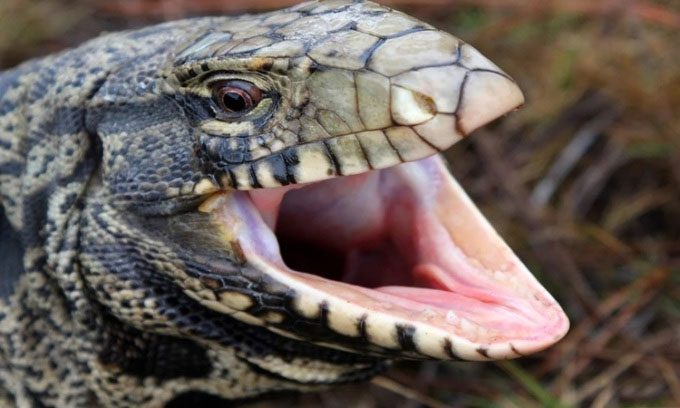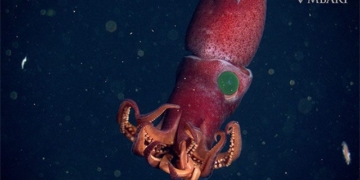Deep within the Everglades, the tegu lizard, a voracious reptile with striking spotted scales, ranks among the most concerning invasive species in the United States.
The Argentine tegu, a large black and white lizard that can grow up to 1.2 meters long, has proliferated throughout Southern California. They have also appeared across the Southeastern United States, posing a threat to native species and farmers, according to National Geographic.

The tegu lizard is a rapidly growing omnivore in the southern United States. (Photo: Outdoor Life)
Native to South America, the tegu lizard is an omnivore that is ready to consume anything with nutritional value that fits in its mouth. They commonly eat the eggs of ground-nesting animals such as birds and reptiles, including endangered sea turtle species. They also prey on small animals like pigeons and other small creatures. The tegu lizard even consumes strawberries as well as low-growing vegetables. Their remarkable resilience makes it difficult to control or reduce their spread once established. However, recent efforts to curb the tegu population in the Everglades and Georgia appear to be effective.
The tegu lizard has spread in South Florida for over a decade after escaping captivity or being released into the wild by pet owners. They have migrated into at least two counties in Georgia in recent years. The species has also been recorded in four counties in South Carolina, where biologists suspect they are breeding. In response, South Carolina enacted a ban on tegu ownership in 2021. In that same year, Georgia introduced regulations on tegu ownership as well. Additionally, they have been spotted in Alabama, Louisiana, and Texas, with populations developing in Central Florida.
A 2018 study conducted by the U.S. Geological Survey (USGS) utilized information about tegu lizards in South America to predict their potential spread in the U.S. According to Amy Yackel Adams, a biologist at the USGS, the entire Southeastern U.S. is at risk due to its climate being suitable for tegu lizards. However, there are no official estimates of the tegu population living in the U.S. They thrive best in upland forests and grasslands, particularly in areas with significant seasonal rainfall, such as subtropical pine forests and hardwood forests in Florida. Due to climate change causing tropical and subtropical regions to shift northward, suitable habitats for tegu lizards in North America will expand.
Researchers are particularly concerned about the egg-eating habits of tegu lizards. In Venezuela, they are notorious for sneaking into chicken coops to steal eggs, which makes poultry farmers in the U.S. particularly wary. If tegu lizards continue to spread throughout the Southeast, they could threaten many ground-nesting or terrestrial species, such as the Eastern indigo snake, which is listed as threatened. They could also consume the eggs of gopher tortoises and American alligators.
Tegu lizards are remarkably resilient and can withstand colder temperatures better than some other reptiles due to their ability to raise their body temperature more than 7 degrees Celsius above the ambient temperature. If it gets too cold in the winter, these creatures become sluggish and will hide in the burrows of gopher tortoises or other animals. They can also recover quickly after being hunted.
To prevent the spread of tegu lizards in the U.S., authorities are seeking solutions. In 2020 alone, traps set by the USGS captured over 900 tegu lizards near Everglades National Park in South Florida. According to USGS data, efforts to eradicate the species are beginning to show results. The tegu population in Central Everglades is declining slowly but steadily. In Georgia, biologists are also trapping in Toombs and Tattnall counties and have noted a reduction in tegu numbers.


















































